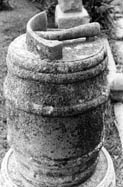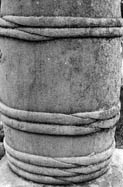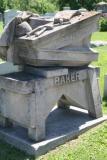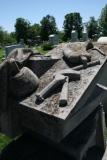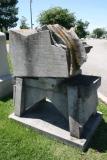Tombstones: Tools on TombstonesIn 2000, a year after his death, the Association for Gravestone Studies, of which Warren was a longtime member, recognized his exceptional service to the field of gravestone studies by posthumously presenting him the Forbes Award. His former student, John Michael Vlach, who gave the acceptance speech, said this: “Warren’s first gravestone study appeared in 1978. Understandably it investigated the symbolism of tools found on gravestones. The skilled woodworker was about to devote himself to works in stone as he discovered stonesmarked with images of axes, mauls, wedges, adzes, and hammers. The interpretation of this vocabulary of icons became the task that finally brought Warren to the Association of Gravestone Studies. It was the AGS that most appreciated his findings; it was the AGS that gave him the necessary encouragement to keep looking at Indiana gravestones. He was particularly fascinated by stones in the form of tree-stumps, stones that recalled the lumbering trades of his youth. Warren began a never-finished quest to locate all the tree-stump stones of Indiana. Born to be a man devoted to things made of wood, it seems fully appropriate that he ended his life devoted to stones that looked like trees.” (“The Forbes Award for 2000: Warren E. Roberts” in AGS Quarterly Fall 2000, 19.Below you will find images that Patricia Glushko made of Baker's footstone, referenced in Warren's words in the right column:
|
